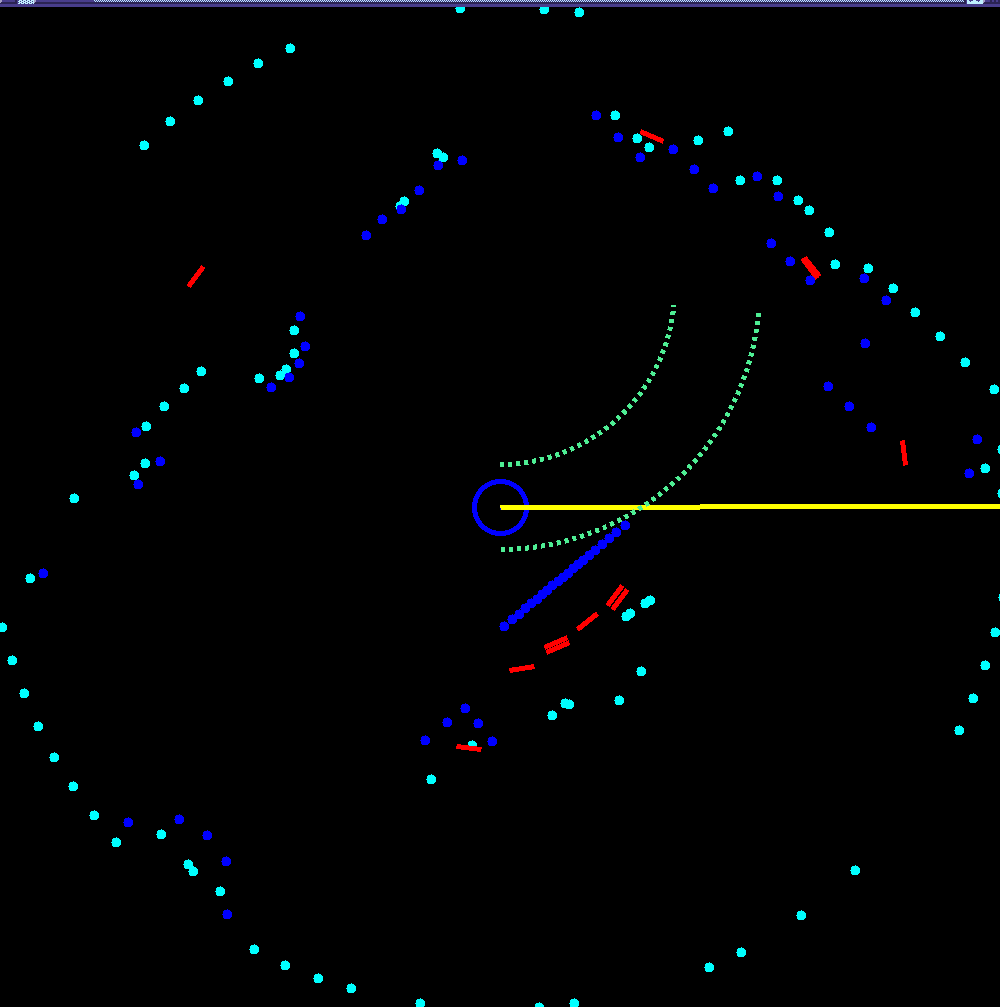


|

|
|
Minerva's environment is densely populated. People may move fast, and
in unpredictable ways. Even static obstacles often cannot be sensed
reliably. Avoiding collisions is of uttermost importance for robots
operating in public spaces.
Minerva's lowest level navigation module is the "Dynamic Window Algorithm" (DWA), a method to navigation at high speeds in dynamic environment. DWA enables Minerva to travel at up to 1.6 meters per second (over 5 feet per second), while still avoiding collisions with obstacles. At such speeds, the robot's inertia is substantial. Minerva's collision avoidance module considers torque limits when determining motion speed and velocity. To cope with difficult-to-detect obstacles, the localization modules is consulted periodically to extract from the map a set of "virtual" sensor measurements, which roughly correspond to positions of known obstacles or hazards, such as a nearby staircase. The following picture depicts a typical situation. Shown here is the robot (center) and the direction of the target location (yellow line). The various dots correspond to sensor measurements--both virtual and real. To avoid collisions, the robot accepts a detour and moves around the obstacle (green dotted circle).  Plenty more information on Minerva's collision avoidance module can be found in the following papers:
|



|